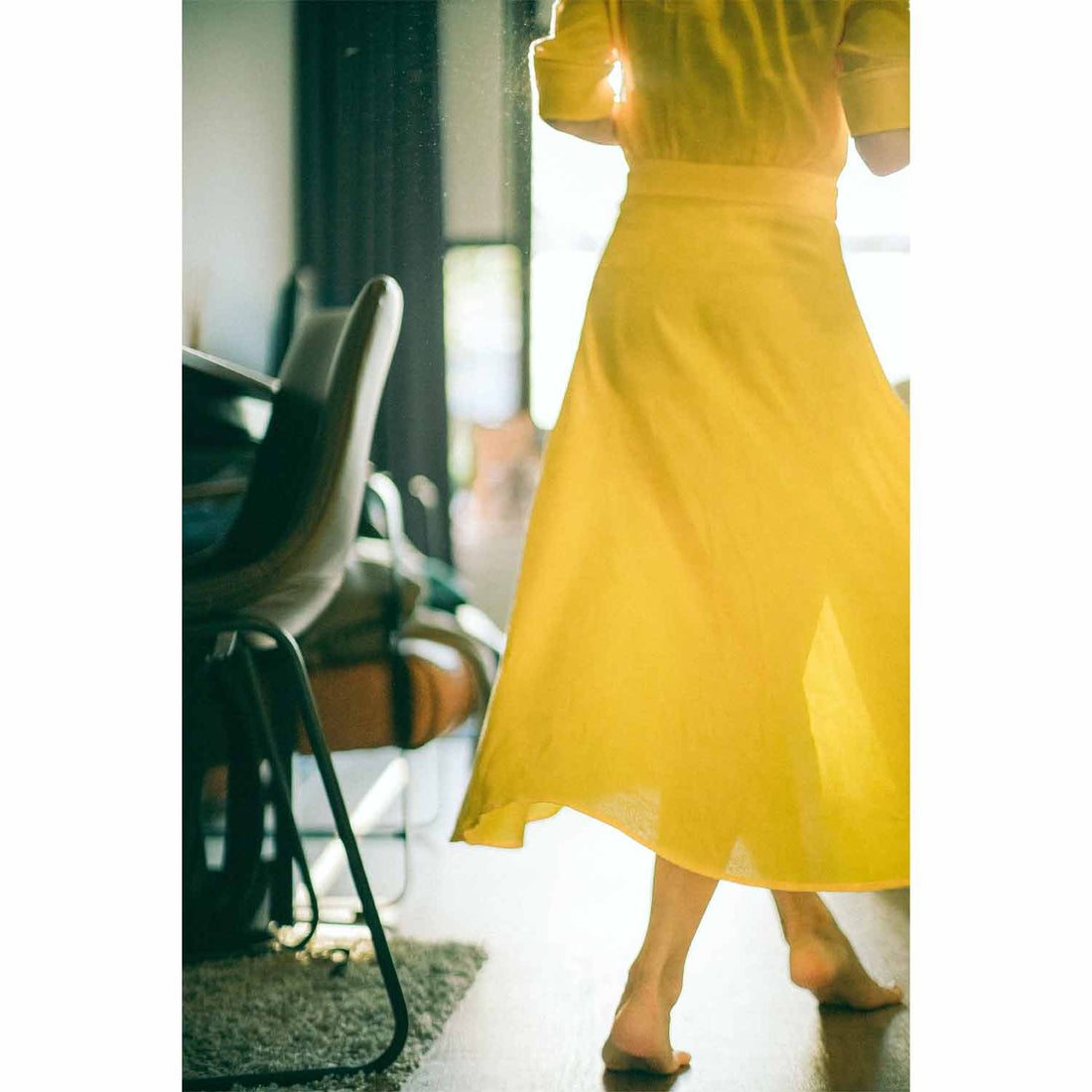On a walk, with no fixed destination, somewhere between fields, in a moment of rest close to nature, I feel the impact of the yellow fields, thus colored, here next to me, by the immense wild marigolds that are born spontaneously. In addition, in the background, by immense sunflowers, with their faces well turned to the sun! They look more like a huge yellow blanket resting on the dirt floor, making it luminous, happy and full of energy. I feel like jumping out of the car and walking through all that color, but I feel sorry for putting on so many beautiful little flowers that boldly provoke us with their contagious color!
The perception of what is outside of us quickly transports us to our interior, making us navigate through close or distant memories, especially those that have marked us in some way in our life path. It reminds me of yellow, being the favorite color of one of my brothers, which led him to keep one of my polo shirts, although he refused all the clothes that passed from me, because I was a girl - in the good traditional way in which the clothes were reused by the younger brothers - because, in fact, it was yellow, their color!
Yellow represents Summer! It's logo, which makes us think about this color. And as such, light, heat, brightness lead us to intense feelings. Also, if it is exaggerated, it can become tiring, even causing visual fatigue, as it reflects a large amount of light. Who can look at the sun? Nobody!
Sun, heat, light, are perceptions that are comfortable, pleasant! Therefore, Yellow is associated with positive characteristics. It is a color that appears to be assumed by major brands, such as Ferrari, in a symbology of luxury, comfort, fun and freedom; McDonald`s as a fun place, where families can get together and enjoy the moment, with a tasty, quick and affordable meal, for most of them; like IKEA that offers us comfort and beauty, for little money; it also appears in the CAT brand (caterpillar): whose characteristics are durability, quality, efficiency. Yellow is still the color of Information, if you remember the Yellow Pages!It is also a preventive color, in the sense that it attracts attention: let's think of traffic lights and traffic signs, in which the color yellow draws our attention to possible dangers.
Yellow is not an emotional color, that is, linked to feelings, to the heart, being associated with the color of intelligence and wisdom. Symbolizes creativity, but always with logic; making decisions quickly; analytical and critical capacity, both with oneself and with others; control of emotions. It gives us energy, joy, optimism, joviality and confidence.
The gold that comes from the color of gold represents the idealization of yellow and ends up encompassing the most positive qualities of this color, combined with luxury, richness and strength. Characteristics related to autumnal melancholy, decline and illness are attributed to yellow. But in conjunction with the autumnal colors, there is also maturity and, associated with this, sensual love, as sung by troubadours in the Middle Ages.
The light greenish yellow is given the classic attribution of jealousy, envy, avarice and selfishness. Other characteristics are attributed to yellow: hypocrisy, impulsiveness, anxiety, obsession, irritability, nervousness, impatience.
When associated with the color black, it represents a lack of discernment. When associated with gold, it symbolizes wealth and prosperity.
In a room painted yellow and according to theories of Experimental Psychology, regarding Color and its influence on human behavior, yellow can cause irritability and lead to a greater and faster emotional outburst. It is a color that, for example, encourages babies to cry when they are in a space, such as a room, painted like this.
It has the ability to increase metabolism in the human body and in conjunction with red, it stimulates the appetite.
Michel Pastoureau, considered one of the greatest historians of color symbology, explains that: ancient societies loved Yellow. It was the color that was part of everyday life in Rome and Greece. In Rome, at weddings, the bride and groom were dressed in yellow. In the Middle Ages, it was largely replaced by gilding, used in particular by artists in their works.
Yellow was then seen in less happy situations: the yellow flag, in a town ravaged by the plague and obligatorily used by people associated with crime or situations considered amoral, both because of their clothes and because of the use of yellow accessories, such as headscarves, in women who dedicated themselves to prostitution; in single mothers, the use of caps of this color, or even, by the application of yellow symbols on the clothes themselves, as those who had debts, that is, in the Middle Ages, corresponded to the color of “dishonor”.
In the 20th century, Jews were obliged to wear a yellow Star of David, sewn to the back of their clothes, as a discriminatory element. One of the reasons for choosing this color was also, because it is quite visible, even in the dark.
The association of the color yellow with betrayal is born with Judas, the traitor of Jesus, who appears on the screens in a yellow tunic and in which this color is also highlighted, with the blond hair.
In painting, from the 19th century onwards. XVI, there is less and less yellow and reappears from the century. XIX, with Impressionism, to which outdoor painting contributed, with the paints already used in tubes, which allowed its easy use, even outdoors.
Then, Yellow returns, in all its splendor, valued and assumed with its color and energy, leading to putting its history and less happy characteristics in the background. And when we talk about this color, we cannot fail to remember the two great painters of yellow: Van Gogh with his Sunflowers and Gauguin, with the Yellow Christ, among so many and such beautiful paintings in which the color yellow is a continuous presence.
In a last curiosity about this color, I can add that it was obtained through saffron, being a very expensive product and therefore, initially and in the East, where this spice existed, granted to those who had wealth and power. Later, through saffron (pollen of a thistle), found in the pyramids of Egypt, garments thus dyed and this plant began to be cultivated in Europe, from the Middle Ages. Later, the ink used came from the Jalde or Reseda plant. It was the easiest, as the plant and the piece were cooked in the same vessel at the same time and it did not lose its color with washing, as it did with saffron.
As far as today and fashion are concerned, yellow only seems to fit casual summer outfits. However, in elegant fashion a silk or satin or velvet dress is appreciated and considered. Culturally, Asia is the place where this color is most associated with clothing, as it enhances its yellow skin.
Despite all the ambivalences of this color, who doesn't like to wear a tunic, a skirt or a dress, over tanned, relaxed and powerful skin, on a summer afternoon?...
Until our next meeting, live in an energetic, healthy and colorful way, preferably with Yellow!
Matilde Proença


1 comment
Adoro os blogs da Matilde Proença. São leves, curiosos e também instrutivos.
Aguardo ansiosamente a próxima cor.
Obrigada Retry.
Paula Fulgêncio